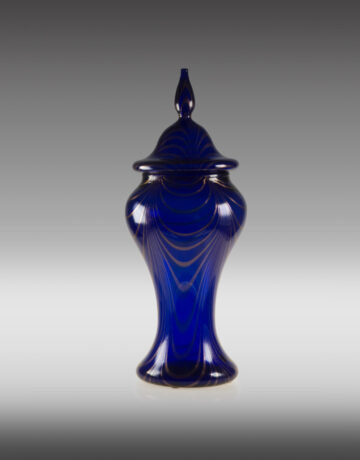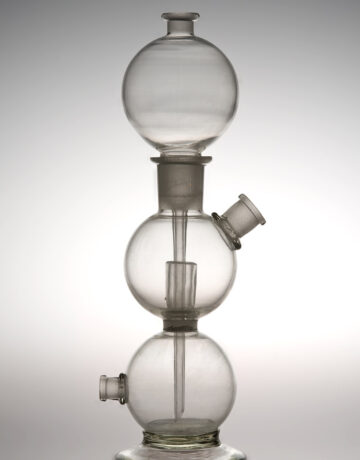Glass Art Museum: A Short Preview of the Collection
 In the rooms of Villa Rosa you can admire a selection of objects in Altare style (façon d’Altare), in transparent glass, made by the workers of the S.A.V. – Società Artistico Vetraria (Artistic Glassmaking Society) active from 1856 to 1978. Alongside this production, the collection also preserves artistic objects created by the main glassmakers of Altare and contemporary works of art and design. The history of Altare’s glass production is primarily dedicated to the sector of laboratory and pharmacy glassware and glass for common use, intended for all aspects of daily life, recognizing in this material its malleable, hygienic and recyclable aspect.
In the rooms of Villa Rosa you can admire a selection of objects in Altare style (façon d’Altare), in transparent glass, made by the workers of the S.A.V. – Società Artistico Vetraria (Artistic Glassmaking Society) active from 1856 to 1978. Alongside this production, the collection also preserves artistic objects created by the main glassmakers of Altare and contemporary works of art and design. The history of Altare’s glass production is primarily dedicated to the sector of laboratory and pharmacy glassware and glass for common use, intended for all aspects of daily life, recognizing in this material its malleable, hygienic and recyclable aspect.
Alongside the precision and technical skill of the workmanship, also based on the use of moulds followed by a final manual finishing, mostly in the laboratory glass field, the Altare’s glassmakers also demonstrated a marked artistic creativity with the technique of engraving. This technique, which the Schmid brothers brough to Altare in the mid-nineteenth century from Bohemia, allowed local workers to execute geometric designs and decorations on the surface of the glassware when it cooled down. A room of the museum is dedicated to this basic artistic production which allows you to observe the characteristics of the different techniques – grinding, fluting, acid etching, lathe engraving – which have been transmitted unchanged over time.
An attention to the artistic aspect also returns to the “hall of the giants”, so named for the presence of large glass vases created for the Universal Exhibitions, and towards the first experimentations which took place in the second half of the 1890s in the design field, and continued with the Opal series created in the 1950s by the designer Teobaldo Rossigno from Altare. This line allowed the Altare’s glassmakers to use colour – full warm and uniform – as well as innovative shapes that are still absolutely cutting edge.

The rooms of the Museum on the second floor host a series of unique pieces, created during the break from work in the glass factory, by some of the most important master glassmakers from Altare who were active during the twentieth century:Mr. Bormioli Isidoro (known as Dorino), the Costantino brothers and Mr. Bormioli Cimbro. These objects contain, in addition to a great technical ability, an excellent chemical knowledge of materials which has allowed them to experiment with matter as well as with shapes.
The Museum collection also houses a series of objects created following the last great migration of glassmakers from Altare, who had always been nomads, to Argentina, following the economic crisis that arose after the Second World War, which united their traditions with the Bohemian ones and the taste of the native populations.
Finally, the Museum hosts a series of contemporary works created for two annual events of the Museum: “The Glass Art of Altare” (Altare Vetro Arte) and “The Glass Design of Altare” (Altare Vetro Design), which shows the new artistic trajectories undertaken by the use of this ancient material, expanding the permanent collection with works by contemporary artists and designers who work and experiment with new glass techniques.
Bibliography:
Michela Murialdo, La collezione del Museo dell’Arte Vetraria, in Villa Rosa – Museo dell’Arte Vetraria Altarese (The collection of the Glass Art Museum, in Villa Rosa – Glass Art Museum of Altare), edited by Valentina Fiore, Series Guides of the Liguria Regional Museums Directorate – Sagep editor, 2023, p.15
